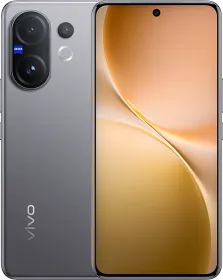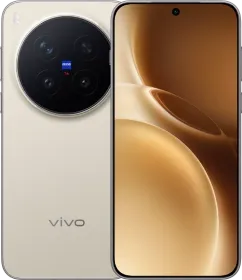Vivo has now unveiled its first in-house imaging chipset, ultra-high transparency glass lenses, innovative coating technologies, and Zeiss natural colors at a recent event in China. The chipset by Vivo is called Vivo V1 and this along with other technologies will debut with Vivo’s X70 smartphone line-up very soon.
Vivo V1 Smart Chip

Vivo says that to create this new Vivo V1 chip, a team of more than 300 people have worked hard for more than 2 years for the sole purpose of Research and Development. Vivo has also had in-depth cooperation with smartphone processor manufacturers from over the world. This was done to ensure that Vivo V1 works seamlessly with the main processor without any form of compatibility issues.
Vivo says that their new chip offers high computing power, low latency, and low power consumption. Not only can it process complex calculations at high speed, but also complete parallel processing of data like GPU and DSP. The company also claims that Vivo V1 has seen a massive improvement in energy efficiency ratio compared to DSP and CPU when faced with a huge number of complex operations.
ALSO READ: Samsung is bringing Snapdragon 778G 5G Chipset in this new phone soon
The chip is said to be optimized in data storage architecture as well as high-speed read (up to 35.84 Gbps) and write transfers to maximize simultaneous processing capacity. Vivo boasts that V1 has an equivalent of 32MB large cache with on-chip storage. V1 surpasses some of the current flagship desktop computer processors to achieve low-latency, MEMC noise reduction, and frame insertion in 1080p 60FPS movies says Vivo.
The calculation imaging algorithm in the Vivo V1 is said to be superimposed. This means that when processing tasks with the same amount of calculation at high speed, compared to the way of software implementation, the dedicated algorithm reduces the power consumption by 50%.
Vivo Ultra-Low Dispersion and High-Transmittance Glass Lens

The chipset is not the only innovation that Vivo has done. Along with Vivo V1, the company has announced that the X70 series will feature glass lenses for the first time. The glass lenses are expected to have high transmittance, lower dispersion, and better thermal stability as compared to plastic lenses. All these greatly reduce the appearance of flare ghosts when shooting night scenes.
Although glass lenses are difficult and expensive to produce, Vivo says that the yield rate during the early phases of production is just approximately 60%. As a result of this, Vivo says that its glass lens can reach an Abbe number of 81.6, which is the official chromatic dispersion measurement indication and highest among mobile phones. Vivo’s lens can now compete with professional camera lenses if this is true.
The lens is also said to have a high purity grade and the center transmittance has been raised to a maximum of 95%. Vivo has also employed the AOA dynamic optical calibration technique to correct the sharpness loss, which might be a result of lens thickness or eccentricity errors.
Vivo SWC Coating Technology
Vivo has joined hands with Zeiss to apply an advanced coating technology to mobile phone lenses. To counter the traditional and industry problems like glare and ghosting, Vivo has introduced this SWC coating technology.
ALSO READ: Vivo X70 Pro Plus key specs and design revealed
Based on the principle of bionics, reflected light is fully suppressed, and the reflectance is reduced to a minimum of 0.1% which improves the purity. In addition, Vivo has exclusively unveiled the ALD atomic layer deposition process to form a nano-scale coating on the ultra-high transmittance glass lens to further reduce the light reflection.
What else will be new?
The problem of petal ghosting is also one that cannot be shaken off by smartphones. Vivo has decided to use pigment spin coating technology in the lens to solve the problem of adhesion between pigment and blue glass. “Professional creators are more inclined to faithfully restore the natural colors seen by the human eye.” So, to make the hue more accurate, Vivo has introduced a 3D color mapping matrix algorithm.
If all this was not enough, Vivo has said that it will add the Zeiss Sonnar Lens simulation effect to its X70 series. X70 smartphones will allow users to modify the filming technique for time-lapse films as cameras will include a Log mode and a Super RAW function that can produce 14-bit depth RAW pictures.
Just like other companies, Vivo has unveiled its imaging tools and hardware, which it hopes will pave the way for the future Vivo devices’ imaging capabilities.
Vivo New Innovations Launch Date

As revealed earlier most of these innovations are rumored to be a part of the X70 series of smartphones by Vivo that are officially set to be launched in the Chinese market on 9 September. Soon after the China launch, Vivo is expected to launch the smartphone line-up globally too.
































